
| These pics can also be seen in the feb 2001 issue of Split Screen Scene, the SSVC club magazine. The pickup definately is one of the most abbused model in the whole bus range. They were usually owned by builders who used them to haul all kinds of materials in the back. Stuff like gravel and sand are no good for the paint. Top it all of with a lot of rain and the cargo bed is a nice place for rust. So finding a clean and low millage pickup these days is not so easy, although i've recently seen a few verry low millage single cabs at the shows. I wanted to own a splitty for ages, but being a student ment i had to settle for a bay for a few years. Late 1999 i put the bay up for sale (and then reclined a few offers, it was my first car after all), but i finally sold it to get cash to realise my dream.
My good friend Hans Sprenkels sell bus parts and often gets calls from people looking to buy or sell a bus. I'd told him i was getting serious about finding a split. Bought from a german guy in financial trouble it was now taking up space in this guys collection of beetles and mercs, so it had to go. The big problem was the paint, the german PO had started to sand it down, but never gotten around to painting it. It came with some extra parts (a gearbox and some small stuff) at a low price (for a splitty anyway). I told the man i was seriously thinking about it and i would call him later that week. On the way back Hans and I discussed the bus and what would be neaded to get it back on the road in time for the strat of the show season. It definatly needed a new piece of floor and the sill could to with some TLC, the lower cargo door was rusted beyond repair, but a younger item was included in the deal. The dropsides were gona be the biggest problem and we decided to leave them alone in order to get the bus back on the road first. Not even 2 weeks later we used hans T3 syncro and a trailer to get my new car back to Hans' workshop (which is near the testing station for imported vehicles). First up were the brakes. With only 27.500 km on the clock, the drums looked like new. The cyclinders had to be replaced though and the shoes got relined. Hans welded up the floor and a small piece of the chassis and we were on our way to the testing station to get it approved for dutch roads. We put some 14 inch wheels on as my 15 inch rims still had diagonals on them and they had some cracks in them. drove to the RDW station and waited for the test. the first thing the official said was "what a nice van, you don't see those anymore". things where looking good! no real problems, we showed all the documentation (booklets, first 3 months of perol history and the low KMs). he was inpressed. the only problem he could find was a battery that was not tied down. when we said "whoops, we totally forgot the put the cover back on", he went "you've even got the original battery cover ?!? just make sure you put it on when you get home" !!! :-)
With dutch (vintage) plates on the car, the next step was getting in painted in it's original color. The dropsides were left along, but i got plenty of extra paint made. The interior is also untouched, 40 years old and still original paint and no radio. Got the truck back from the paintshop in early april and the VW Euro swapmeet was held on the 17th. There is nothing like a mad rush to get a car finished in time for it's first show. What a cool feeling to arrive at a show in my own splitty. Soon after that is went on the SSVC Hannover tour, a big week long trip without much problems. Only starting it became a bit hard. A starter realy and some new plugs soon solved this problem and it's done 6000 km this year. Future plans: restoring the dropsides (they've got rusty bottoms), fitting the correct lower cargo door and a set of sprintstar wheels (will keep the stock rims for the propper vintage vw meets)
May 1960 saw the introduction of the automatic choke and the 34 horse engine (1184cc). The first 34 horse engine had engine number 5.000.000 and the pickup originally had engine number 5.023.187
The current engine is number D059989X. The X at the end defines this engine as an original VW exchange engine. The first year of 34 horse engines had a lot of troubles with over heating. The heads material tended to to expand when heated and the construction of the heads caused the valve settings to change. This obviously had horrendus effects on the engine and forced VW to redesign the heads. |
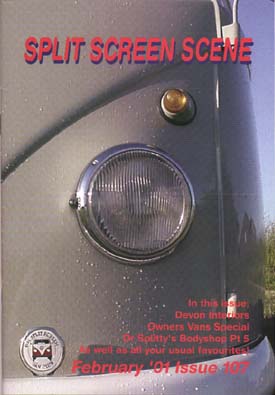 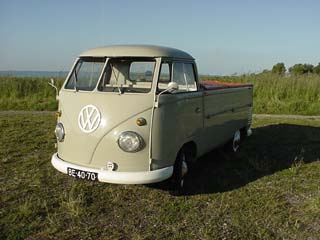  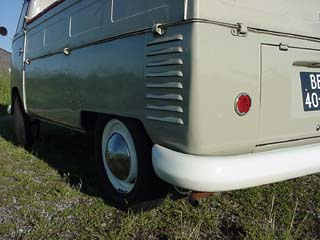  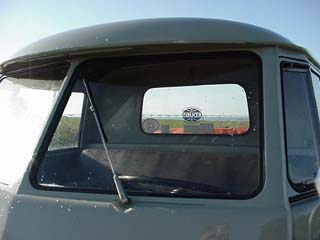 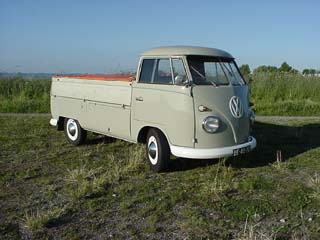 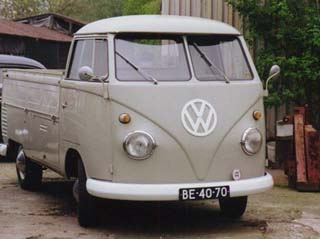 |